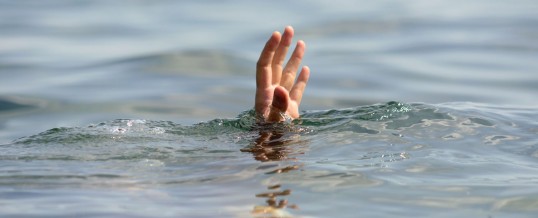
After this year’s harsh winter, summer can’t seem to come soon enough. To many, especially children, summer means a new mermaid bathing suit, some super fast flippers and hot days spent at the pool, lake, and beach. There is lots of laughing, ice cream, protests against another application of sunscreen and everyone goes home happy and tired at the end of the day.
The Wilton Volunteer Ambulance Corps (WVAC) wishes this type of summer fun for all, but the reality is that inevitably, we will be called to save a child who has drowned. The fact is, we can’t because drowning is death. If we are lucky, we might be able to save a child from a near-drowning (survival of a drowning event involving unconsciousness or water inhalation), but serious complications can occur. No one goes home happy or tired, but instead traumatized and devastated, wishing they could turn back the hands of time.
According to the Centers for Disease Control and Prevention, drowning is the second most common cause of death in children and ranks fifth overall for unintentional injuries in the U.S. In addition, 70% of drownings of young children occur in pools at private homes. Contrary to what is portrayed on television and in movies, people who are actively drowning do not thrash about and scream. In fact, they will not capture your attention because of an automatic reaction called the “Instinctive Drowning Response”.
Subtle signs of the Instinctive Drowning Response:
- A drowning person’s mouth bobs below the surface, with little time to come up and get air.
- A drowning person is unable to speak because breathing comes first.
- A drowning person’s arms are pushing down against the water, unable to wave or grab for safety.
- A drowning person’s body is upright with no kicking to help them to surface.
- A drowning person’s struggling on the surface happens in 20- to 60-second intervals before going back under.
Delayed drowning happens after a problematic incident in the water. During an incident water is actually forced into the lungs and not discovered until it’s too late, resulting in death within one to 24 hours after the person has been in the water.
Symptoms of delayed drowning:
- Continued coughing, often uncontrollable, for many hours after incident
- Trouble breathing or shortened breath
- Chest pains
- Extreme fatigue and/or lethargy
- Change in typical behavior
- Face becomes pale
Therefore, if you see a child or friend get knocked down by a wave or swallowing water and sputtering and coughing after jumping into water, they should be monitored closely. Should you see any of the above-mentioned signs, get emergency help immediately.
One thing that all near-drownings have in common is that the resuscitation procedures are the same. The individual must be pulled out of the water, 911 should be activated, CPR begun and immediate defibrillation with an AED. CPR helps keep the blood circulating, but only defibrillation can treat someone in cardiac arrest and possibly save a life. It is for this reason that it is critical that all public pools, lakes and beaches have AEDs readily accessible. In addition, having bystanders who are trained in CPR and AED use increases a drowning victims chance for survival.
Drowning prevention should be the ultimate goal, but can only be achieved if parents and caregivers of children in the water are attentive at all times. Children playing in the water make noise, lots of noise. If things suddenly become a bit too quiet, take that as a warning sign of a possible problem.
The Wilton Volunteer Ambulance Corps Inc. is a nonprofit 501(c)(3) corporation.
Information: wiltonambulance.org
ShareJUL
